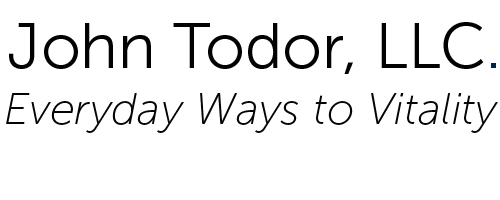Avoid Muscle Loss as You Age - Start Now!
Losing muscle mass and strength can start as early as one’s 30’s, but is doesn’t have to limit your lifestyle or healthspan.
Muscle loss or sarcopenia, is a condition characterized by the progressive loss of skeletal muscle mass, strength, and function associated with aging. It is a natural part of the aging process but can have significant consequences for overall health and quality of life, as it can lead to reduced mobility, increased risk of falls, frailty, and loss of independence.
The onset of sarcopenia typically begins in middle age, around the fourth or fifth decade of life, but becomes more pronounced as individuals reach their 60s and beyond. The rate of muscle loss accelerates with advancing age, with some estimates suggesting that individuals may lose 3-8% of muscle mass per decade after the age of 30.
There are several factors that contribute to the development of sarcopenia, including hormonal changes (such as reduced testosterone and growth hormone levels), decreased physical activity, inadequate nutrition (especially inadequate protein intake), chronic inflammation, and other underlying health conditions.
Preventing sarcopenia requires a multifaceted approach that addresses these contributing factors. Some strategies to prevent or mitigate sarcopenia include:
Regular exercise: Engaging in resistance or strength training exercises can help maintain and build muscle mass and strength. It's essential to include exercises that target all major muscle groups and gradually increase intensity over time.
Adequate nutrition: Consuming sufficient protein, along with a balanced diet rich in fruits, vegetables, and whole grains, is crucial for supporting muscle health. Older adults may have higher protein requirements than younger adults to maintain muscle mass, so it's important to ensure adequate protein intake.
Hormone replacement therapy: In some cases, hormone replacement therapy may be considered under the guidance of a healthcare professional to address hormonal imbalances that contribute to muscle loss.
Vitamin D supplementation: Vitamin D plays a role in muscle function, and deficiency is associated with muscle weakness and loss. Older adults, especially those with limited sun exposure, may benefit from vitamin D supplementation.
Addressing underlying health conditions: Managing chronic diseases such as diabetes, cardiovascular disease, and inflammation can help prevent or slow the progression of sarcopenia.
Rehabilitation and remediation: For older individuals who have already experienced significant muscle loss or functional decline, rehabilitation programs focused on strength training, balance exercises, and mobility training can help improve muscle mass, strength, and function.
Overall, maintaining an active lifestyle, consuming a nutritious diet, and addressing any underlying health issues are essential strategies for preventing and managing sarcopenia as individuals age. Additionally, targeted interventions such as exercise programs and rehabilitation can help older individuals regain lost muscle mass and function, improving their overall quality of life.
